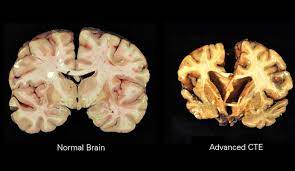Brain Health and Football
Is it worth it?

February 9, 2023
Football is the most popular sport in the United States. People go into the NFL and play all around the world traveling to different fields and fans cheering everywhere. The glory of the game attracts many, however, it attracts even young kids, and they begin wanting to play the sport. Many people may not know the dangers of allowing young people to play because it’s such a common sport, but football can cause lasting damage to the brain. When talking about football, people focus on the points and victories, but not the aftermath. Football causes serious brain injury for teenagers and young children because they’re playing when their brains are still developing.
The hits players take during practice and during the game damage their brains throughout the season and lead to a decrease in mental capacity down the road. The bodies of people in high school are still developing, and constantly stunting such growth or damaging the body in day-to-day collisions in blistering heat can be detrimental. Tackle-football has been the cause of several deaths. According to American Journal of Sports Medicine, deaths can be caused by cardiac failure, brain injury, and heat illness, and there is an average of 12 deaths per year in high school tackle-football. “During practice and during games, a single player can sustain close to 1,000 hits to the head, in only one season, without any documented or reported incapacitating concussion.” The continual impact to the brain can cause serious issues for players as they go from the field to the classroom.
“Such repeated blows over several years, no doubt, can result in permanent impairment of brain functioning, especially in a child,” stated Bennet Omaha, the co-founder and director of the Brain Injury Research Institute at West Virginia University.
In another study, Purdue University researchers followed a football team from Lafayette, Indiana. The athletes wore special helmets with sensors that measured the number and severity of head impacts. The researchers also put the players in an MRI scanner to measure their brain activity while the students took a test of thinking and memory. After the season was over, they compared the brain scans with the hits. Each player logged from 200 to more than 1,800 hits to the head in a single season. Over two seasons, six players had concussions, but 17 others showed brain changes even though they didn’t have concussions.
These are all examples of why playing football at such a young age is a risk. As more information comes to light, a good move would be to encourage young people to pursue other sports with less chance of brain injury.
